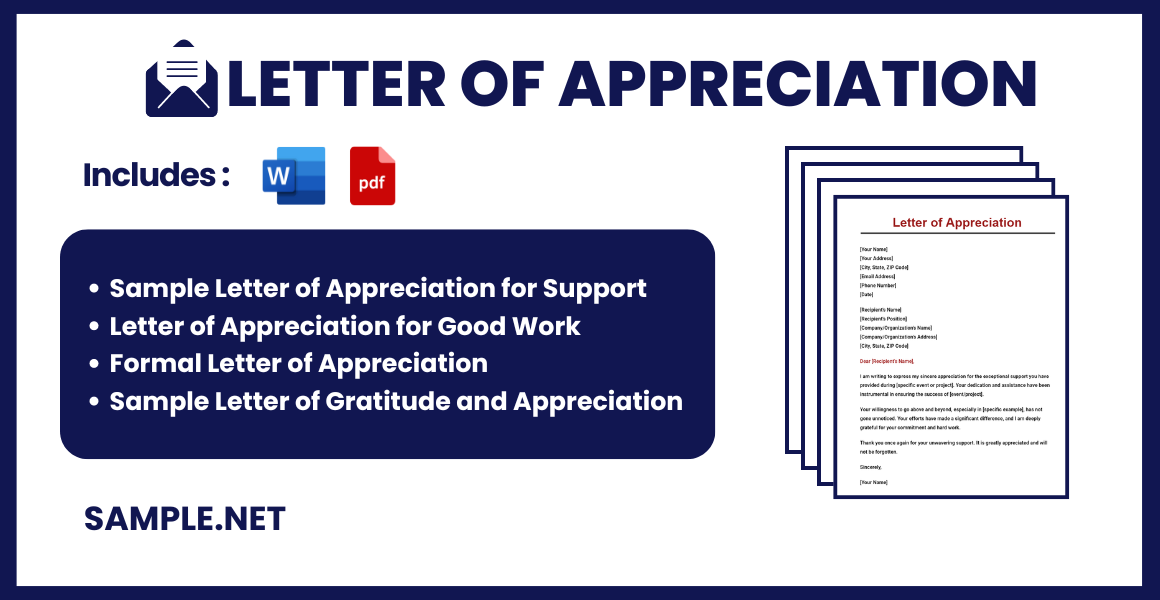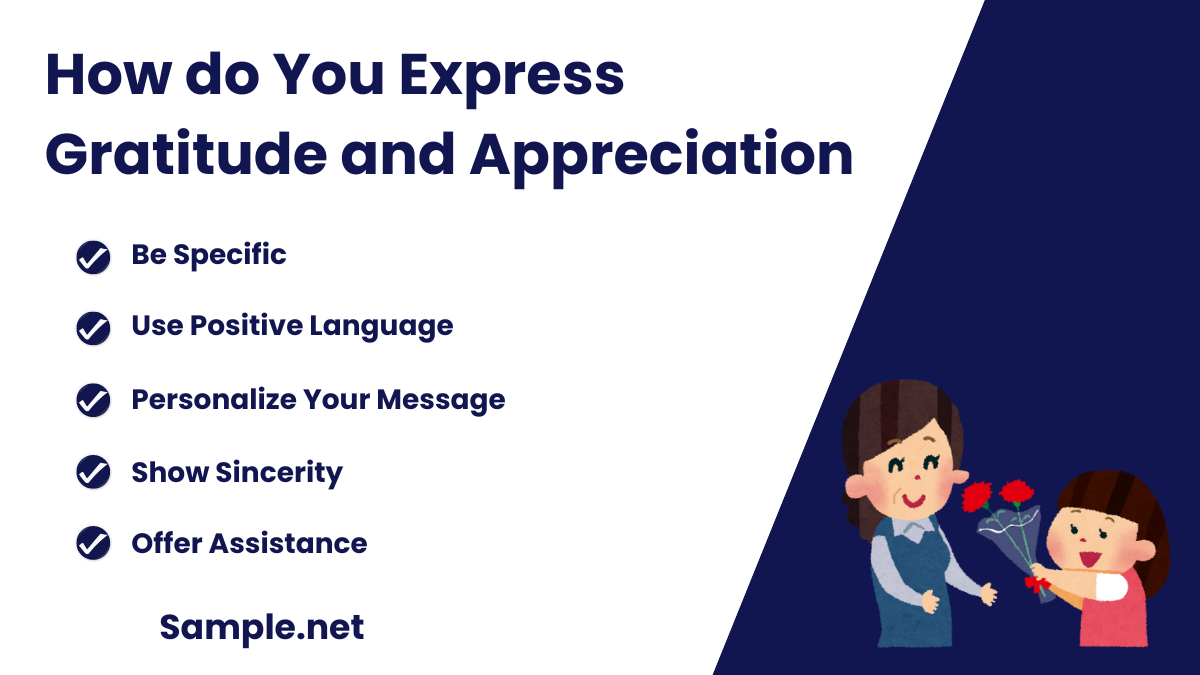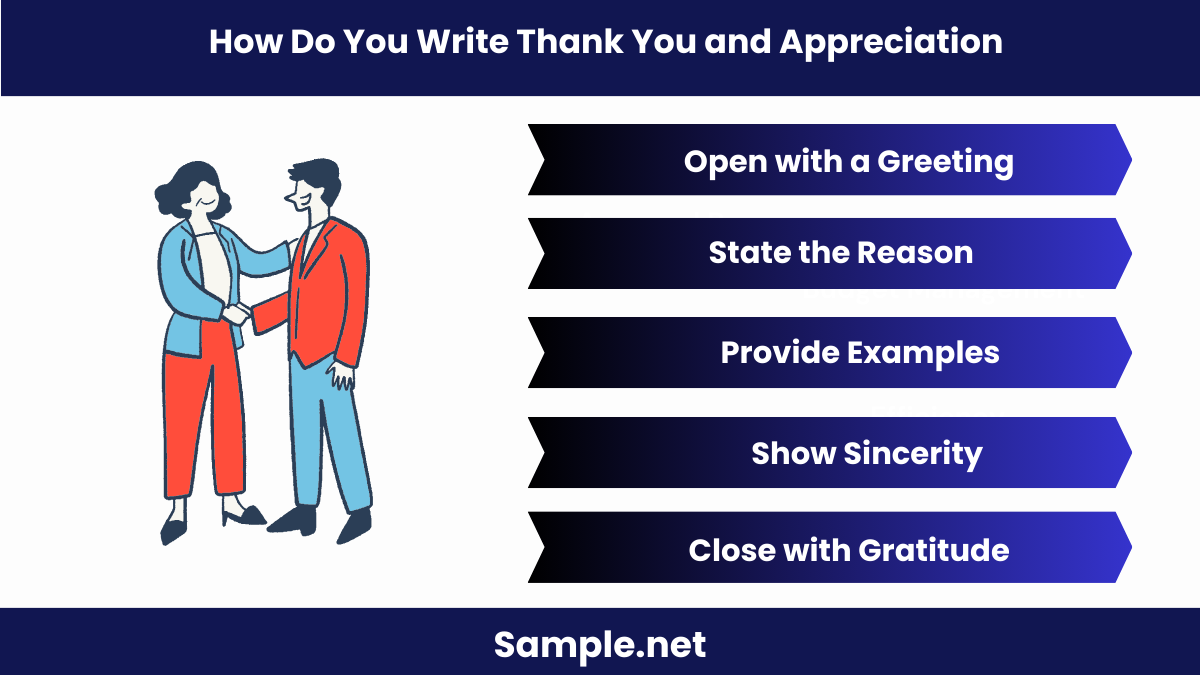Letter of Appreciation Samples
-
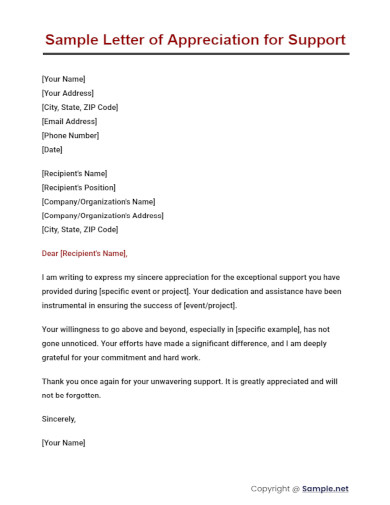
Sample Letter of Appreciation for Support
download now -
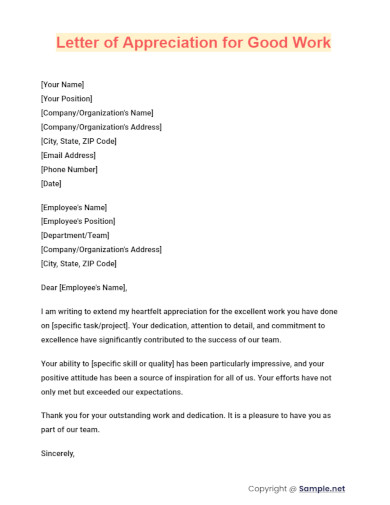
Letter of Appreciation for Good Work
download now -
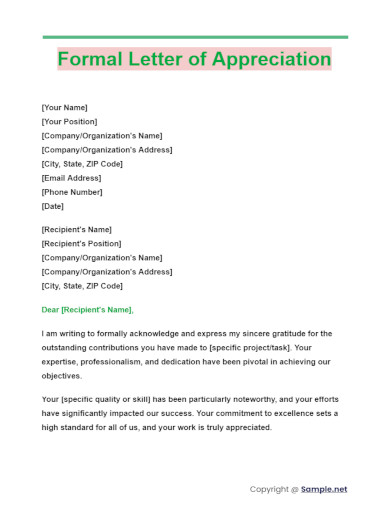
Formal Letter of Appreciation
download now -

Sample Letter of Gratitude and Appreciation
download now -
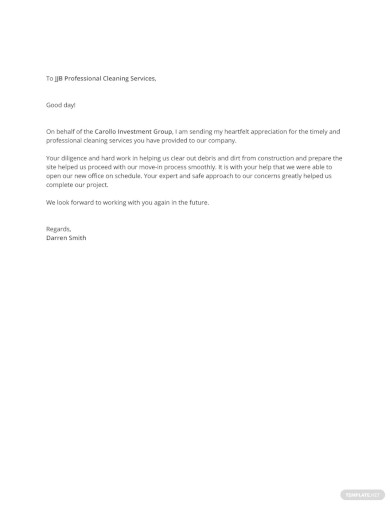
Free Letter of Appreciation for Cleaning Service Template
download now -
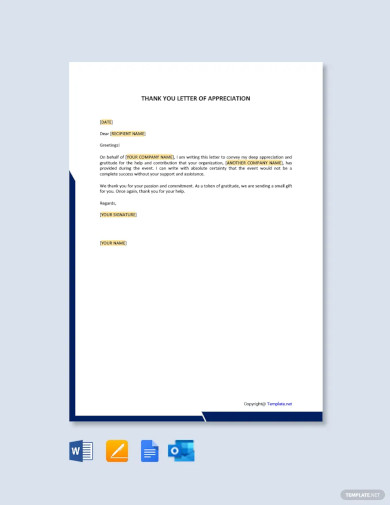
Professional Thank You Letter of Appreciation Template
download now -
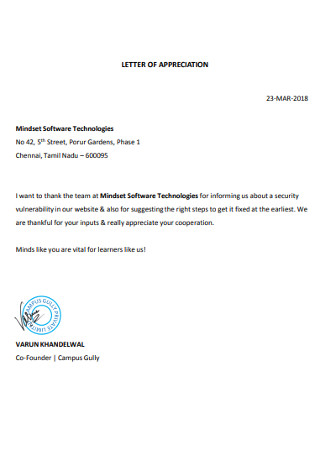
Software Technologies Letter of Appreciation
download now -

Volunteer Letter of Appreciation
download now -
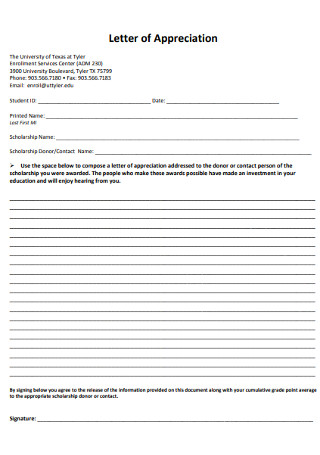
Sample Letter of Appreciation
download now -
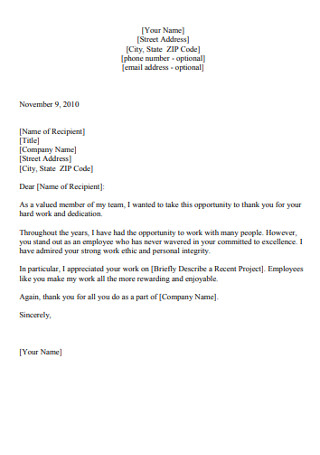
Employee Appreciation Letter
download now -
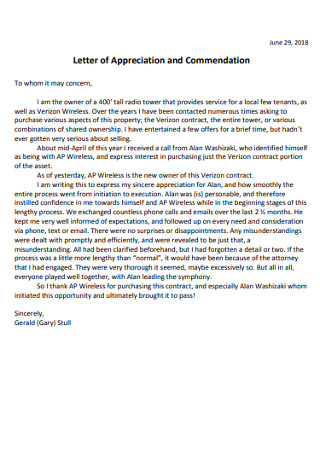
Letter of Appreciation and Commendation
download now -
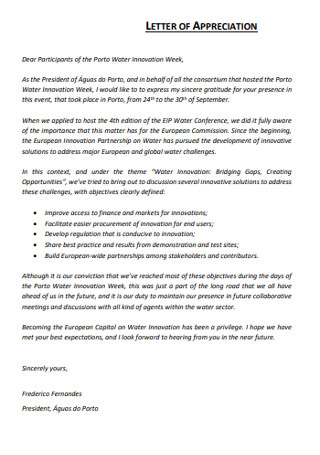
Basic Letter of appreciation
download now -
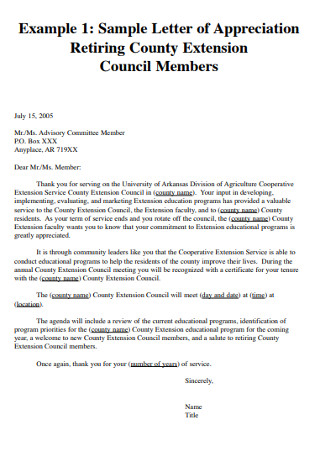
Sample Letter of Appreciation Council Members
download now -
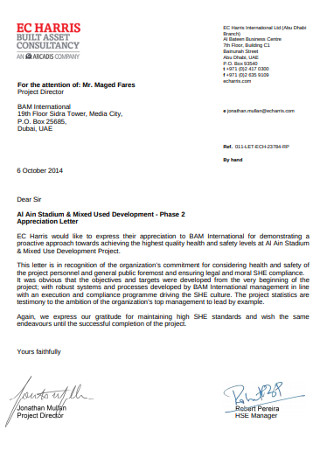
Stadium Development Appreciation Letter
download now -

Preparing Letter of Appreciation
download now -

Principal Letter of Appreciation
download now -
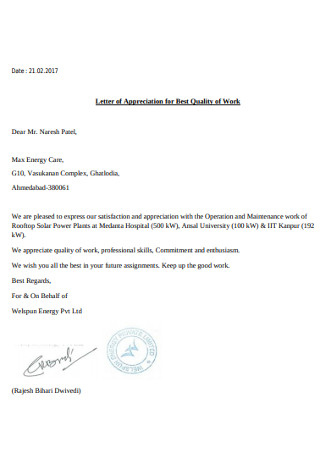
Work Appreciation Letter
download now -
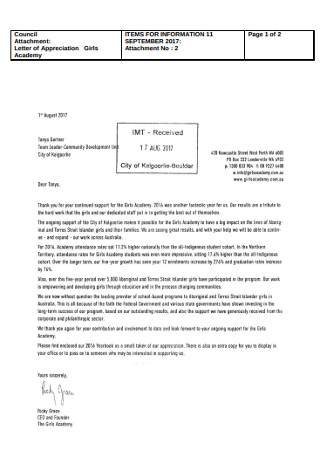
Girls Academic Letter of Appreciation
download now -
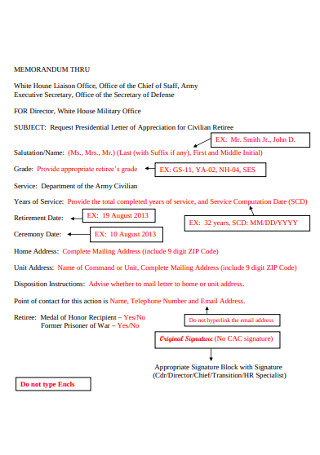
Letter of Appreciation for Civilian Retiree
download now -
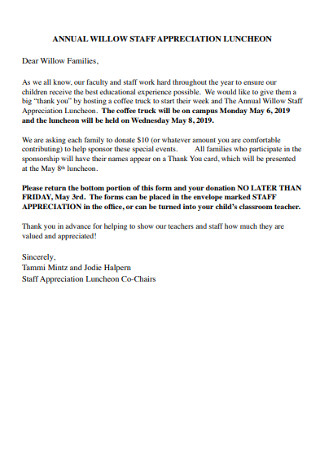
Staff Letter of Appreciation
download now -
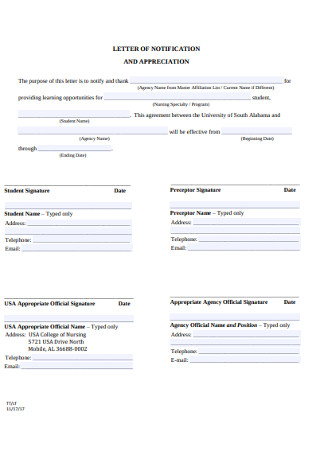
Letter of Notification and Appreciation
download now -

Marketing Manager Letter of Appreciation
download now -
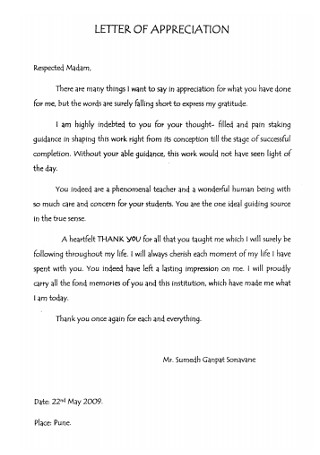
Standard Letter of Appreciation
download now -
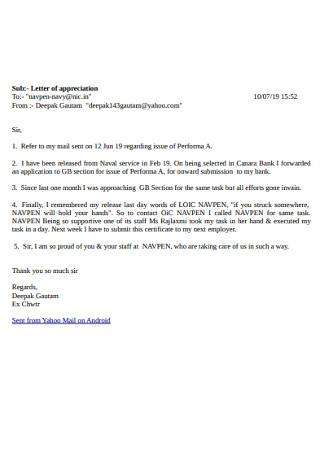
Bank Letter of Appreciation
download now -
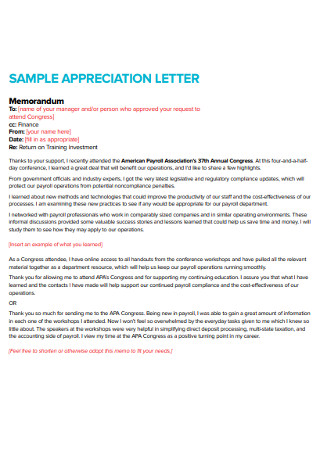
Sample Manager Letter of Appreciation
download now -

Formal Letter of Appreciation
download now -
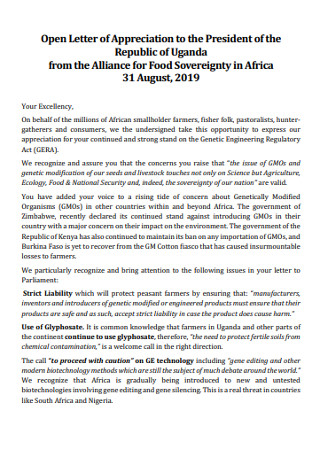
President Letter of Appreciation
download now -
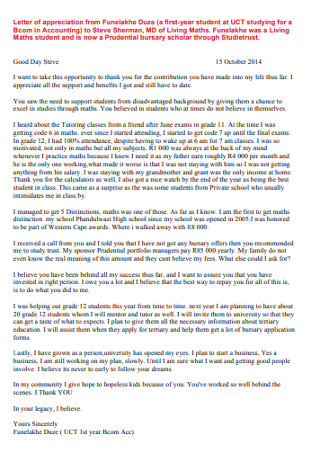
Student letter of Appreciation
download now -
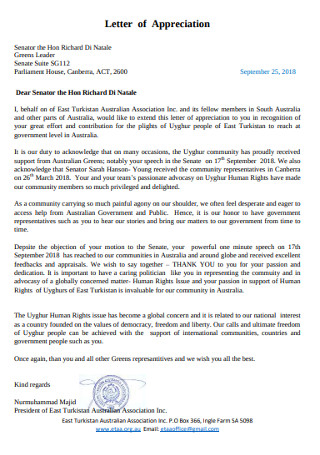
Simple Letter of Appreciation
download now -
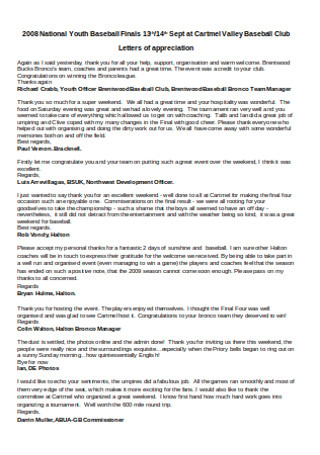
Baseball Youth Letter of Appreciation
download now -
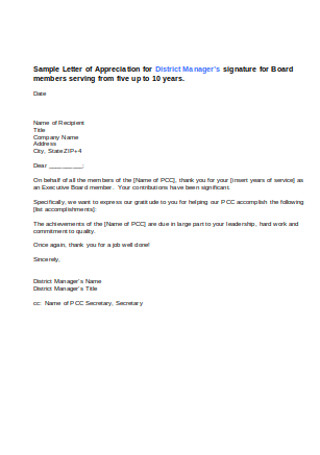
Sample District Manager Letter of Appreciation
download now
FREE Letter of Appreciation s to Download
Letters of Appreciation Format
Letter of Appreciation Samples
What is a Letter of Appreciation?
The Benefits of Gratitude and Appreciation: A Research and Statistical Collection
Why You Shouldn’t Underestimate Thank You Letters
How to Make a Meaningful Letter of Appreciation
Should I reply to an appreciation letter?
What is the ideal thank-you letter format?
Is a handwritten thank you letter necessary?
How do you write a letter of appreciation?
What are the types of appreciation letters?
How do you express gratitude and appreciation?
What to write in a thank you letter?
How to write a heartfelt thank you note?
How do you write thank you and appreciation?
How to write a letter honoring someone?
What is a good appreciation sentence?
How to do a thank you letter?
How do I write a short appreciation letter?
How do you thank someone for their kindness and support?
How do you show appreciation in one word?
How to express deep appreciation?
What is the most humble way to say thank you?
Download Letters of Appreciation bundle
Letters of Appreciation Format
[Your Name]
[Your Address]
[City, State, ZIP Code]
[Email Address]
[Phone Number]
[Date]
[Recipient’s Name]
[Recipient’s Position]
[Company/Organization’s Name]
[Company/Organization’s Address]
[City, State, ZIP Code]
Dear [Recipient’s Name],
1. Introduction
I am writing to express my heartfelt appreciation for [specific reason, e.g., assistance, support, service].
2. Body Paragraphs
- Specific Examples: Provide specific examples of what the recipient did and how it helped or impacted you.
- Gratitude: Express your gratitude and highlight the positive effects of their actions.
3. Closing Paragraph
Thank you once again for your [assistance/support/service]. Your efforts are truly appreciated.
Sincerely,
[Your Name]
What is a Letter of Appreciation?
Letters of appreciation are formal documents that express gratitude and acknowledge someone’s efforts or contributions. They are often used in professional settings to thank employees, colleagues, or partners for their hard work and dedication. These letters not only boost morale but also strengthen relationships by showing recognition and respect. A well-crafted letter of appreciation includes specific details about what is being appreciated, the impact of the recipient’s actions, and a heartfelt thank you. They are similar to thank-you notes but are typically more formal and detailed.
According to the Employee Appreciation Survey by Glassdoor, 81% of employee respondents admit to being motivated when they receive appreciation.
Even though 68% of them already said that they’re receiving enough appreciation from their superiors, 53% of them expressed that they’ll stay longer under a company’s wing when they’re appreciated more.
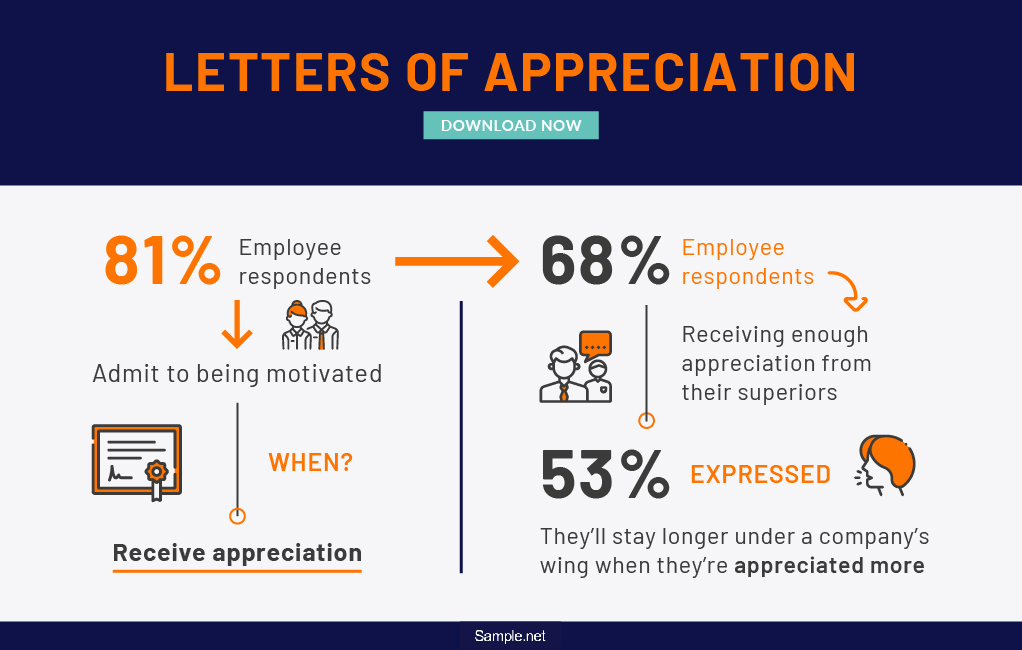
The Benefits of Gratitude and Appreciation: A Research and Statistical Collection
Gratitude and appreciation may be one of the most researched emotions in the world. Over the course of the years, these studies reaped results that showed the relevance of gratitude not only in forging social bonds and professional networks but, most importantly, in the context of science and health. Below are some of the latest findings of the topic:
Why You Shouldn’t Underestimate Thank You Letters
A study published by the Association for Psychological Science says how people constantly undervalue the power of gratitude. It has known benefits in the areas of mental and social wellness as well. It’s considered a global etiquette expressed in a variety of traditions across different cultures.
If this is so, why didn’t thank you letters make it to the trends list?
The study says that people place more weight on how awkward it might express their appreciation, hindering them from doing the act. The research involved an experiment where the participants were asked to write thank-you letters to whoever they wished to send it. The researchers then polled their initial and actual responses. From the data, they uncovered that people are often worried about how they would phrase their message and how their recipients would respond.
So, why should thank you letters become a thing? Here are some few reasons that should motivate you to make one:
1. It revives an old tradition. The pre-technology era made personal letters an integral part of people’s lives back in the day. Envelopes and postcards conquered miles of separation and were once the only means to connect to the rest of the world. No wonder the Carpenter’s “Please, Mr. Postman” was a huge hit.
2. It’s unique. Now that messaging takes literally a blink away, who wouldn’t be delighted to receive a letter of gratitude? While everyone’s content with a simple word of thanks followed by a parade of emojis, taking the extra mile of constructing a full-length document makes all the difference.
3. It’s lasting. Although a word of appreciation doesn’t mean anything less, it’s undeniable that appreciation letters hold much more weight. Why? Because it stays longer. It’s a tangible expression of one’s gratitude. It can also become a keepsake worthy of a spot on someone’s memory box.
How to Make a Meaningful Letter of Appreciation
As appreciation letters are clearly an important part not only in strengthening personal relationships but also in forging secure business connections and in managing professional work agreements, you might want to start making your own. Follow the guidelines below to get started on your letter document:
Step 1: Briefly Narrate Your Purpose
Your recipient should be able to know why you’re writing them an appreciation letter in the first place. This should be visible in the first few sentences of your letter. Explain briefly and go directly into details on what you’re grateful for and how it has benefited you, your group, or your organization. Avoid a lengthy introduction and express your appreciation right away. This way, the person receiving the letter can immediately know what the letter is all about and will take an interest in reading the rest of the copy. You may also see Job Letter of Recommendation
Step 2: Use Proper Salutation
Whenever possible, address your letter directly on a particular individual instead of putting a general salutation of “Dear Sir/Madam.” Know who is directly responsible for granting you their approval, aid, presence, or a spot on their schedule. This makes the letter more personal and will be more appreciated by the recipient because it was exclusively addressed for them. Go out of your way to identify these individuals. It will make all the difference when they see their names printed on the paper. You may also see Apology Letter
Step 3: Specify the Benefits
Don’t settle on merely expressing your gratitude. Give a concise narrative on how their contribution benefited you and your organization, as well as how you plan to use their help in the future. Your recipient will be delighted to know that they’re kindness resulted in something valuable. Go into details. As an example, if your association received a financial aid intended for helping a calamity stricken community, explain how you used the contribution and what materials were distributed to the people. This also prompts them to repeat the act and do more. After all, appreciation is the best motivation driver of a philanthropic spirit. You may also see Letter Of Explanation
Step 4: The Length Doesn’t Equate Sincerity
Limit your word count. A short three-paragraph piece would be enough to deliver your message. A lengthy letter won’t measure the potency of your gratitude, nor will it mean that you’re more thankful than any other beneficiary. Make your content as concise as possible. A long, legal-size and back-to-back letter won’t arouse interest, no matter how eloquent the script might be. This is applicable especially if you’re giving the letter to those in the professional sphere such as a business partner, a fellow administrator, or a boss. Their busy schedule will hinder them from paying attention to a lengthy document that’s not urgent. When it comes to content, brevity wins every time. You may also see Letter of Support
Step 5: Mind the Timeline
You can’t send an appreciation letter whenever you feel like it. There’s an etiquette for sending thank you emails, whether it’s for business or personal reasons. Putting yourself on a donor’s shoes, wouldn’t you be surprised to receive a thank you letter a year after making your contribution? Chances are you’ve probably forgotten why you did that in the first place. Be prompt in sending your letter. For a personal thank you letter, send it three days after the favor or gift has been given. For offices, the schedule can be hectic. This might hinder sending the letter immediately days after the act was done. Mailing it a week or two after a kind gesture will be acceptable. You may also see Official Resignation Letter
Should I reply to an appreciation letter?
While it is not considered necessary, acknowledging appreciation letters is often commendable to maintain client relationships or partnerships. You may also see Standard Job Resignation Letter
What is the ideal thank-you letter format?
When used for business purposes, employ a professional and formal outline by using a business letter format when using print emails. However, when using emails, you can leave out the other parts and go directly to your salutations, greeting, body, and signature with a simple “Thank You” written on the subject line.
Is a handwritten thank you letter necessary?
While it can be more meaningful to write handwritten letters to express your gratitude, it’s impractical when used in a business setting. Your message won’t mean less if you send an email or mail a printed copy with a letterhead. However, if you intend to send it to your friends and relatives, a handwritten letter would be much appreciated. You may also see Explanatory Letter
Success favors the humble, but more so to those who know the value of appreciation. It doesn’t only benefit the receiver, but it also gives the doer a sense of accomplishment. A letter of appreciation may not look like much but just another mail or another paper on someone’s inbox or desk, but it can surely create an impact. You may also see Board Resolution Letter
How do you write a letter of appreciation?
Writing a letter of appreciation involves expressing gratitude sincerely and professionally. Follow these steps to craft a compelling letter:
1. Start with a Formal Salutation
Begin with a respectful greeting, such as “Dear [Recipient’s Name].”
2. State the Purpose Clearly
Mention that the purpose of the letter is to express your appreciation for the recipient’s specific actions or contributions.
3. Provide Specific Details
Detail the actions or behaviors you are appreciating, including the positive impact they had.
4. Express Sincere Gratitude
Convey your heartfelt thanks and appreciation, similar to an Excuse Letter but with a positive tone.
5. Close with a Professional Ending
End the letter with a professional closing statement, such as “Sincerely,” followed by your name. You may also see Letter of Employment
What are the types of appreciation letters?
Appreciation letters come in various forms depending on the context and recipient. Here are some common types:
1. Employee Appreciation Letters
These letters recognize employees for their hard work, achievements, or milestones.
2. Customer Appreciation Letters
Thanking customers for their loyalty or feedback to strengthen business relationships.
3. Peer Appreciation Letters
Expressing gratitude to colleagues for their support or collaboration.
4. Vendor Appreciation Letters
Acknowledging vendors for their reliable service and partnership, similar to an Authorization Letter.
5. Teacher Appreciation Letters
Recognizing teachers for their dedication and positive impact on students.
How do you express gratitude and appreciation?
Expressing gratitude and appreciation involves clear and sincere communication. Here’s how to do it effectively:
1. Be Specific
Clearly state what you are grateful for, providing specific examples.
2. Use Positive Language
Employ positive and uplifting language to convey your feelings.
3. Personalize Your Message
Tailor your message to the individual, as you would in a Consent Letter.
4. Show Sincerity
Ensure your message is genuine and heartfelt.
5. Offer Assistance
Show your willingness to reciprocate or assist in the future.
What to write in a thank you letter?
A thank you letter should be concise, heartfelt, and specific. Here are the key components:
1. Greeting
Start with a polite greeting, such as “Dear [Recipient’s Name].”
2. Express Thanks
Clearly state what you are thankful for, similar to a Formal Letter.
3. Provide Details
Include specific details about how the recipient’s actions benefited you.
4. Show Sincerity
Express your sincere gratitude and appreciation.
5. Close Politely
End with a polite closing, such as “Best regards,” followed by your name.
How to write a heartfelt thank you note?
Writing a heartfelt thank you note involves genuine and thoughtful expression. Here are the steps:
1. Start with a Warm Greeting
Begin with a friendly greeting, like “Dear [Recipient’s Name].”
2. Mention Specifics
Clearly mention what you are thanking the person for, similar to a To Whom It May Concern Letter & Email.
3. Express Emotions
Share your feelings and the impact of their actions on you.
4. Be Concise
Keep your note brief but meaningful.
5. End with Warmth
Close with a warm, personal sign-off, such as “With gratitude.”
How do you write thank you and appreciation?
Writing thank you and appreciation messages involves clarity and sincerity. Follow these steps:
1. Open with a Greeting
Start with a polite greeting, like “Dear [Recipient’s Name].”
2. State the Reason
Mention what you are thanking the person for.
3. Provide Examples
Give specific examples to illustrate your appreciation, as in an Event Invitation Letter.
4. Show Sincerity
Ensure your message is heartfelt and genuine.
5. Close with Gratitude
End with a closing statement that reinforces your gratitude.
How to write a letter honoring someone?
Writing a letter to honor someone involves recognizing their achievements and contributions. Here’s how:
1. Begin with a Formal Salutation
Start with “Dear [Recipient’s Name],”
2. State the Purpose
Clearly state that you are writing to honor and recognize their achievements.
3. Highlight Achievements
Detail their specific accomplishments and the positive impact they have made.
4. Express Gratitude
Thank them for their contributions, similar to a Permission Request Letter but with an appreciative tone.
5. Close with Respect
End with a respectful and heartfelt closing statement.
What is a good appreciation sentence?
A good appreciation sentence is, “Your hard work and dedication are truly appreciated. Thank you for making a difference,” akin to a Contract Letter
How to do a thank you letter?
To write a thank you letter, start with a greeting, express gratitude, provide specific details, convey sincere appreciation, and close politely. It’s similar to crafting an Appeal Letter.
How do I write a short appreciation letter?
Write a short appreciation letter by greeting the recipient, stating your gratitude, mentioning specific actions, expressing heartfelt thanks, and ending with a polite closing, similar to a Sponsorship Letter.
How do you thank someone for their kindness and support?
Thank someone for their kindness and support by expressing sincere gratitude, mentioning specific acts of kindness, and highlighting the positive impact, similar to the tone used in an Authority Letter.
How do you show appreciation in one word?
Show appreciation in one word by saying “Grateful,” which conveys deep thanks succinctly, similar to a concise Nomination Letter.
How to express deep appreciation?
Express deep appreciation by detailing the specific actions that made a difference, showing heartfelt gratitude, and acknowledging the positive impact, much like a Lease Termination Letter.
What is the most humble way to say thank you?
The most humble way to say thank you is, “I am truly grateful for your help,” reflecting humility and sincerity, as in a Company Introduction Letter.
In conclusion, writing letters of appreciation is a powerful way to acknowledge and thank individuals for their contributions. This article provided a comprehensive overview of various HR Letter formats, including sample letters, forms, and practical tips for crafting effective appreciation letters. By using these guidelines and examples, you can express your gratitude sincerely and professionally. Whether you are thanking an employee, colleague, or business partner, a well-written letter of appreciation can significantly enhance relationships and boost morale. Use this guide to create impactful letters that make a lasting impression.

